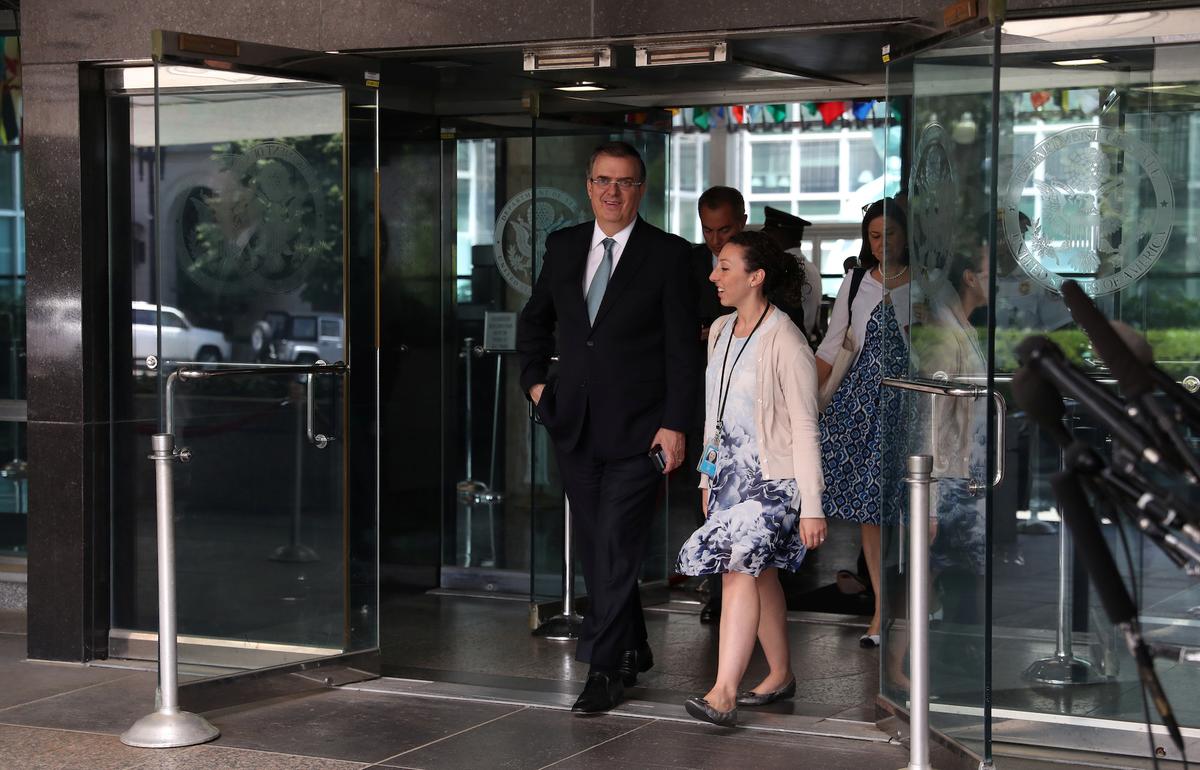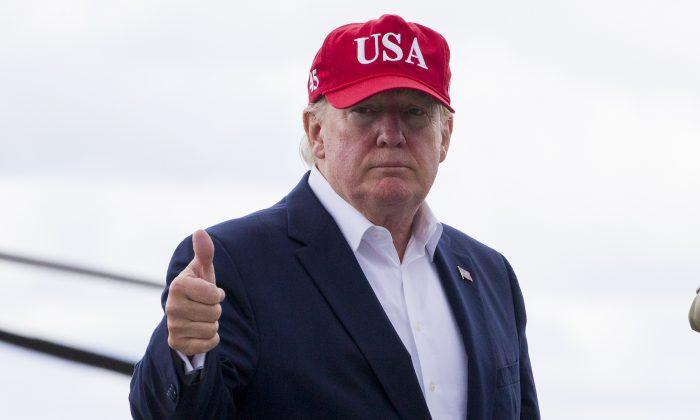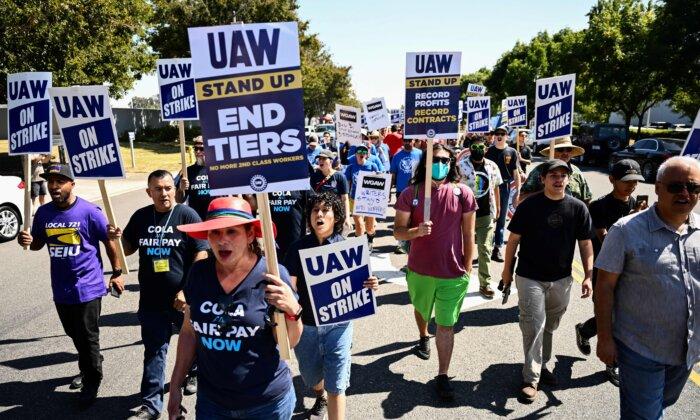President Donald Trump announced that a deal has been reached between the United States and Mexico late June 7, after officials from the two countries met for the third day of talks at the U.S. State Department.
“I am pleased to inform you that the United States of America has reached a signed agreement with Mexico,” Trump wrote on Twitter late June 7.
Trump wrote that the tariffs that had been scheduled to go into effect on June 10 against Mexico have been indefinitely suspended.
“Mexico, in turn, has agreed to take strong measures to stem the tide of Migration through Mexico, and to our Southern Border,” he continued. “This is being done to greatly reduce, or eliminate, Illegal Immigration coming from Mexico and into the United States.”
A “U.S.-Mexico Joint Declaration” released by the State Department late June 7 outlined the details of the deal, saying the United States “will immediately expand the implementation” of a program that returns immigrants who cross the southern border to Mexico while their claims are adjudicated.
Mexico will “offer jobs, healthcare, and education” to those people, “according to its principles,” the agreement stated.
Mexico has also agreed, it said, to take “unprecedented steps to increase enforcement to curb irregular migration,” including the deployment of the Mexican National Guard throughout the country, starting June 10, especially on its southern border with Guatemala.
And Mexico is taking “decisive action to dismantle human smuggling and trafficking organizations as well as their illicit financial and transportation networks,” the State Department said.
Mexican Foreign Minister Marcelo Ebrard said in Washington his team had resisted the United States’ requests to send deported Guatemalans to Mexico. He said he was satisfied with the deal, Reuters reported.
“I think it’s a fair balance because they had more drastic measures and proposals at the start and we reached some middle point,” he said.

The two countries will continue discussions, to be completed in 90 days, on further steps, according to the declaration.
Recent Events
On June 6, Mexico offered to send up to 6,000 members of its national guard to secure its southern border with Guatemala, in a bid to curb the rising influx of illegal immigrants.The Mexican Finance Ministry on the same day also said they blocked the bank accounts of 26 people for their alleged involvement in human trafficking. In a statement, the ministry’s Financial Intelligence Unit (FIU) said it froze the accounts due to “probable links with human trafficking and illegal aid to migrant caravans.”
The two countries began their meeting on June 5 for discussions led by Vice President Mike Pence in Washington. Pence on the morning of June 6 told reporters that Mexico needs to do more to address the illegal immigration situation, though he noted that the previous talks were positive overall.
Swift Change
Trump had indicated on June 4 at a press conference in London that “it’s more likely that the tariffs go on,” and that he was expecting to put tariffs on Mexican goods starting June 10 unless more migrants traveling to the United States-Mexico border from Central America were interdicted by Mexico.But on June 5, Trump sounded more optimistic the tariffs could be avoided, saying Mexico was starting to take his demands seriously.
“I think they want to do something. They’re sending their top people,” he said during a visit with the Irish prime minister in Ireland.
Those top people were Mexico’s foreign minister and ambassador to the United States, who were set to meet with Secretary of State Mike Pompeo and Vice President Mike Pence at the White House.
Trump had said earlier that Democrats have forced him to take action against Mexico because they aren’t willing to fix the United States’ immigration laws that are fueling the immigration crisis.
“Border arrests for May are at 133,000 because of Mexico & the Democrats in Congress refusing to budge on immigration reform,” he tweeted.
He said that at any given time, there are 100,000 migrants moving through Mexico to get to the U.S. border.
“This is a very overt movement. It uses commercial bus lines. These are organized criminal organizations that are smuggling humans,” he said. “In Chiapas, there’s about a 150-mile stretch where most of these crossings occur between Guatemala and Mexico. We need them to interdict these folks at the point of origin crossing their border.”





